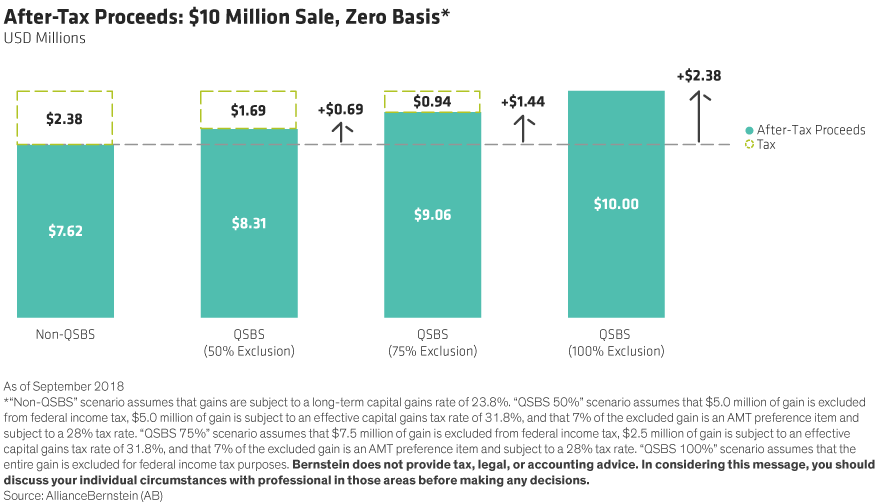This decades-old provision in the tax code was long forgotten. Yet, thanks to relatively recent tax code changes, it’s something nearly everyone in the start-up community should revisit. Here’s what you should know about Qualified Small Business Stock (“QSBS”).
QSBS was added into the Internal Revenue Code (Section 1202) in 1993 as an income tax incentive to promote the formation of and investment in qualified small business. The incentive mechanism? Investors, founders, or employees who are issued stock from a qualified small business can exclude from their federal taxes a portion of the capital gains upon the stock’s sale. Many states that have individual income taxes also conform to Section 1202.
At first glance, the benefit appears quite generous: The maximum amount of gain that can be considered for exclusion is the greater of either $10M or 10 times the adjusted basis of the stock. Yet in practice, the actual gain that can be shielded depends on when the stock was issued.
For instance, a taxpayer who acquired stock issued after enactment of the original legislation on 8/11/1993 could exclude 50% of the gain from tax. However, the non-excluded portion of realized gain would be taxed at a 28% federal income tax rate—regardless of the prevailing long-term capital gains rate at the time of sale. This resulted in an effective tax rate of 14%—closer to 15% for taxpayers subject to the alternative minimum tax—for stock issued before 2/17/2009.
So what changed? The long-term capital gains tax rate dropped to 15% in 2003, rendering the effective tax savings from QSBS stock virtually nonexistent. And with the benefit largely eroded, QSBS faded from view.
Roaring Comeback
The story might have ended there, if it weren’t for changes to the tax code over the last decade:
- The gain exclusion threshold was increased to 75% for stock issued after 2/17/2009 through new legislation passed in response to the credit crisis;
- The following year yet another piece of legislation passed that raised the allowable gain exclusion to 100% for stock issued after 9/27/2010;
- Beginning in 2013, the maximum long-term capital gains rate increased to 20% and a 3.8% tax on net investment income kicked in.
Today, the tax advantages of QSBS have roared back to life given a higher capital gains tax rate, the net investment income tax, and the increases in gain exclusion.
How might this play out in practice today? Let’s consider several scenarios where the founder of a small business decides to sell stock for $10M with a nearly zero cost basis. If this entrepreneur doesn’t claim QSBS treatment on the sale, she faces federal long-term capital gains taxes of up to $2.38M. As mentioned earlier, the benefit of the QSBS exclusion depends on when her stock was acquired, as shown in the three scenarios below (Display).

As the Display shows, utilizing the QSBS exclusion can potentially result in significant tax savings. How can you determine if your company or stock qualifies? Understanding the eligibility requirements under Section 1202 is critical, and will be explored in an upcoming blog post. Other topics in this series will include business entity choice, required documentation, and wealth planning considerations. In our view, QSBS deserves a second look.
Business owners deserve a partner who will support them right from the start. For more thought leadership for entrepreneurs and business owners, check out the related blogs here.
The views expressed herein do not constitute and should not be considered to be, legal or tax advice. The tax rules are complicated, and their impact on a particular individual may differ depending on the individual’s specific circumstances. Please consult with your legal or tax advisor regarding your specific situation.